Skype: neodalle-travel
Tel: +86 135 7447 2266
E-mail: sales@visitaroundchina.com
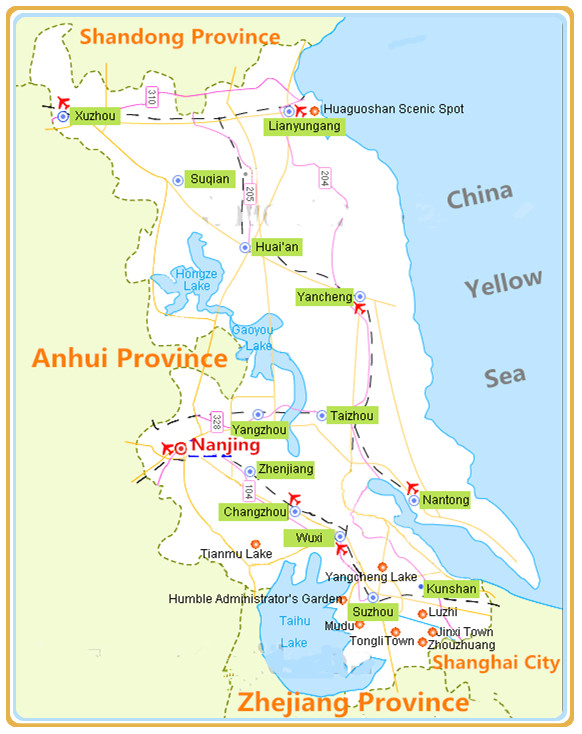 Jiangsu Province is situated in the eastern China. With a long history and the profound Jiangnan (means the culture in southern region of Yangtze River), Jiangsu Province was so named in the Qing Dynasty91644-1911); its two charactersm Jiang ( 江) and Su ( 苏), came from two prefectures in this area. Jiangning (now called Nanjing) and Suzhou, though the history of Jiangsu can be traced to the New Stone Age. What's more, its coastal location is very convenient for communication with the outside world, leading to its fast development in both imports and exports. In the year 2010, the GDP of the province was second only to Guangdong while its per capita GDP ranked first among all China's provinces .
Jiangsu Province is situated in the eastern China. With a long history and the profound Jiangnan (means the culture in southern region of Yangtze River), Jiangsu Province was so named in the Qing Dynasty91644-1911); its two charactersm Jiang ( 江) and Su ( 苏), came from two prefectures in this area. Jiangning (now called Nanjing) and Suzhou, though the history of Jiangsu can be traced to the New Stone Age. What's more, its coastal location is very convenient for communication with the outside world, leading to its fast development in both imports and exports. In the year 2010, the GDP of the province was second only to Guangdong while its per capita GDP ranked first among all China's provinces .History of Jiangsu
Jiangsu is the birthplace of Wu Culture. From as early as several hundred thousand years ago, it has been a place where human beings inhabited. About 6,000 years ago, primitive villages showed up near Taihu Lake and Hongze Lake of this area, which record agricultural civilization. When China’s first unified dynasty, the Qin Dynasty (221 BC - 207 BC) was built, this region was territory of Jiujiang, Kuaiji and the other prefectures. During the Three Kingdoms Period (220-280), its northern part belonged to Wei while the southern was under control of Wu. Nanjing, called Jianye at that time, was the capital of Wu. After that, Nanjing has acted as the capital for another five dynasties in history, hence the name 'ancient capital of six dynasties'. Nowadays, Nanjing is the capital city of the province. In the dynasties following the Three Kingdoms Period, this area was administrated either separately or as a whole by different administrative units. The present territory of the province was initially shaped in the Qing Dynasty (1644 -1911). This rich history rewards the area with a lot of cultural relics like Confucius Temple, the Qinhuai River, Ming Xiaoling Mausoleum, Dr. Sun Yat-sen's Mausoleum, Daming Monastery and Nanshan Temple.
What to see in Jiangsu ?
Located along the lower reaches of the Yangtze River, Jiangsu is a place of typical Jiangnan (south of the lower reaches of the Yangtze River) landscapes, represented by classical gardens and water townships. An old saying goes this way: 'the gardens south of the Yangtze River are the best under heaven and among them the gardens of Suzhou are the best'. Jiangsu is famous for classic gardens and ancient water towns. Traveling to Jiangsu, visitor can also enjoy the oldest opera of China- Kun Opera, and appreciate colorful brocade- Yun (or Nanjing) Brocade, vivid Suzhou embroidery... Read More: Jiangsu Attractions
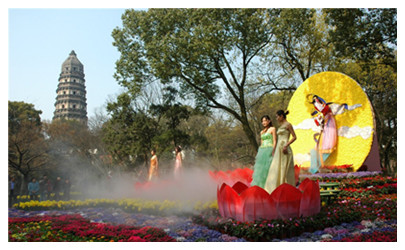 |
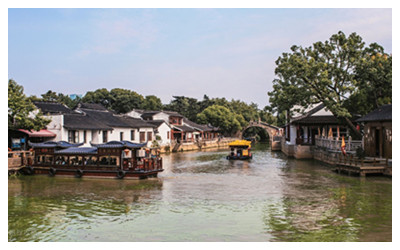 |
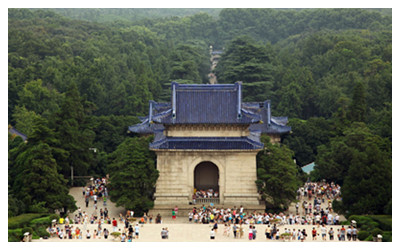 |
| Suzhou Tigher Hill | Zhouzhuang Water Town | Sun-Yet Sen Tomb |
Tourism Cities in Jiangsu
Jiangsu Province is divided into thirteen prefecture-level divisions, all prefecture-level cities. Nanjing is the capital city of Jiangsu Province, Wuxi is the second city of Jiangsu Province. Suzhou is the must-see city in Jiangsu. The other ten prefecture-level cities includes Yangzhou City, Nantong City, Lianyungang City, Xuzhou City ,Huaian City ,Changzhou City, Yancheng City ,Suqian City ,Taizhou City and Zhenjiang City. Here lists top tourism cities in Jiangsu Province.
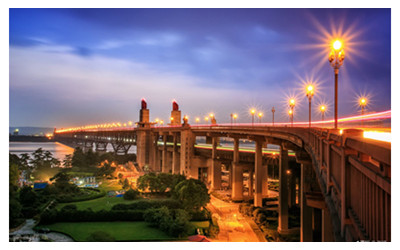 |
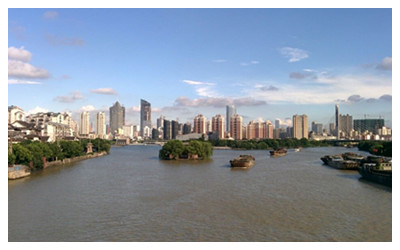 |
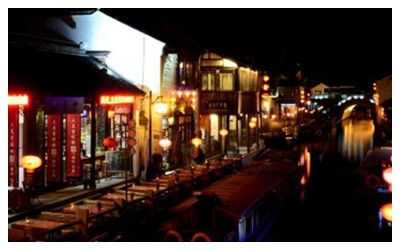 |
| Nanjing City | Wuxi City | Suzhou City |
How to reach Jiangsu?
Jiangsu boasts a well-developed transport network, making travel to and within the province very convenient. Its nine airports serve 106 airlines, including direct flights to Hong Kong, Macau, Thailand Malaysia and Japan. By Rail, more than 70 train services link Jiangsu to over 40 major cities. Between Nanjing and Shanghaim a train runs hourly; tourist trains between Changzhou and Huangshan run weekly.
When to visit Jiangsu?
Situated in a transition belt from a subtropical to temperate zone, the province has a typical monsoon climate. It approximately takes the Huai River Irrigation Line as the demarcation, to the south of which is the subtropical monsoon climate and to the north the warm moist monsoon climate. Generally, it is mild with moderate rainfall and clear distinction of the four seasons.
The best time to visit Jiangsu is from March to November .
Jiangsu Travel Tips
In addition to attractive landscapes, the area of Jiangsu Province is also famous for its amazing folk arts and well-made handicrafts. Here, visitors can enjoy China's oldest opera - Kun Opera and appreciate colorful brocade- Yun (or Nanjing) Brocade, vivid Suzhou embroidery, small but lovely Huishan clay dolls, delicate Changzhou combs, beautiful Yixing teapots and colorful Nantong kites, etc. Last but not least, delicious Su Cuisine, one of the country's eight cuisines, is also a must for visitors going here.
 Ask Questions ?
Ask Questions ?